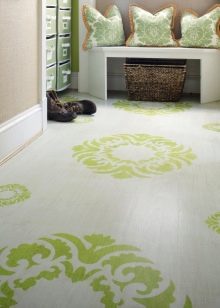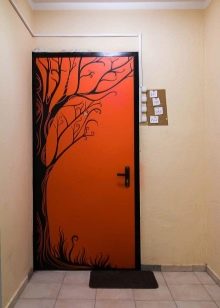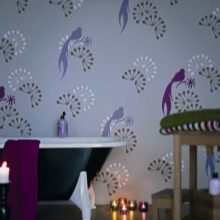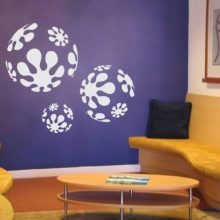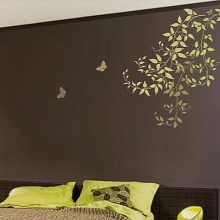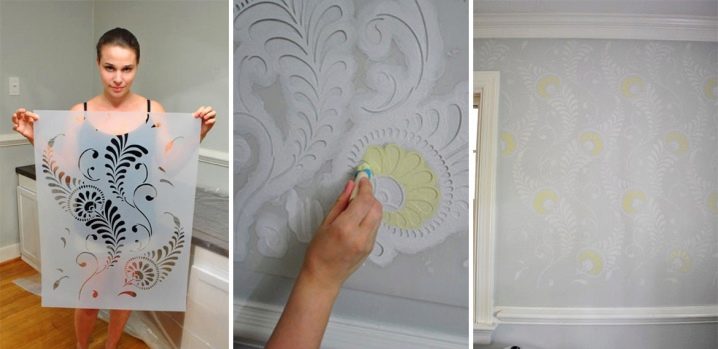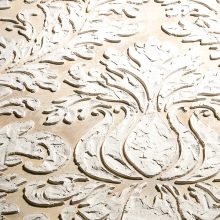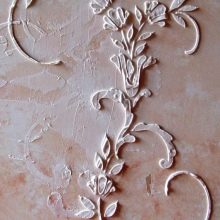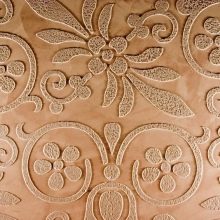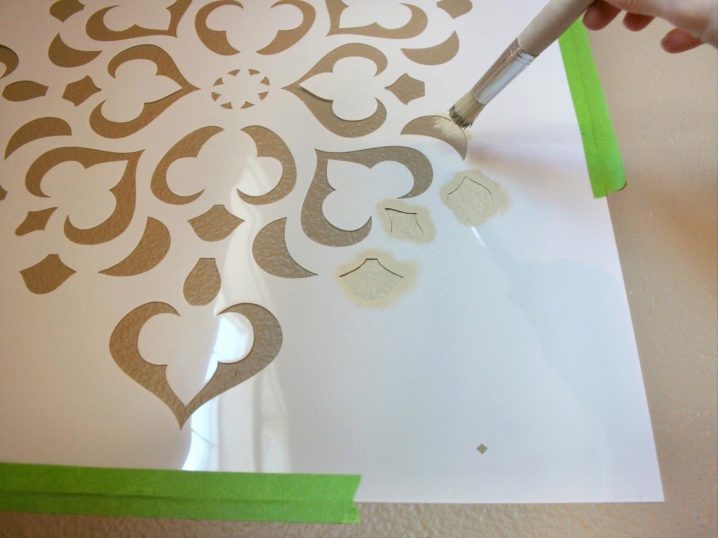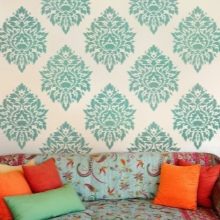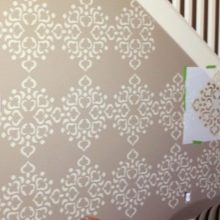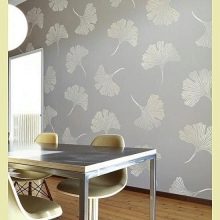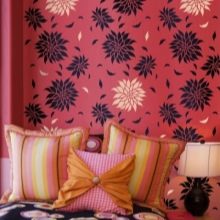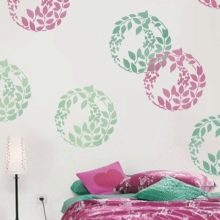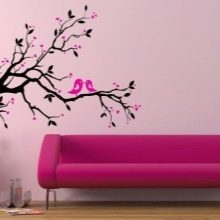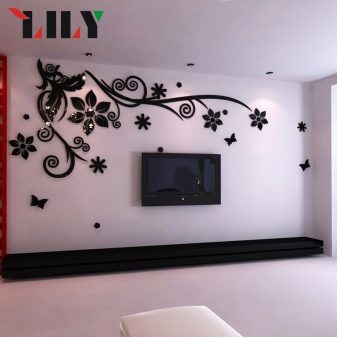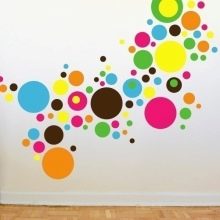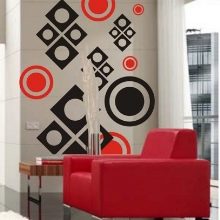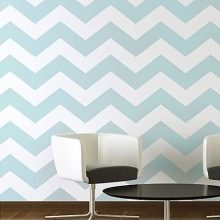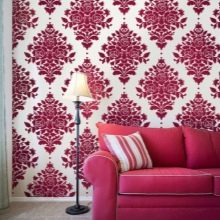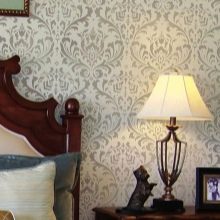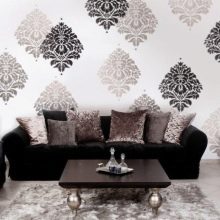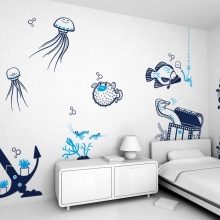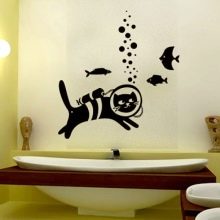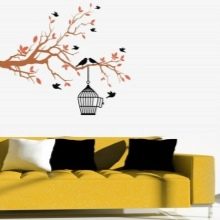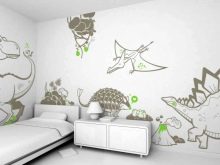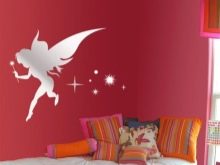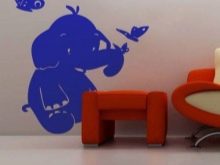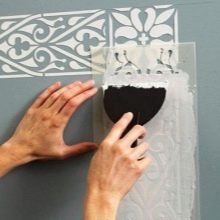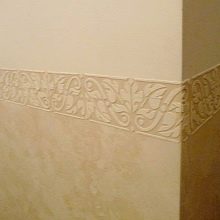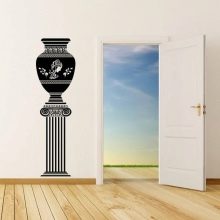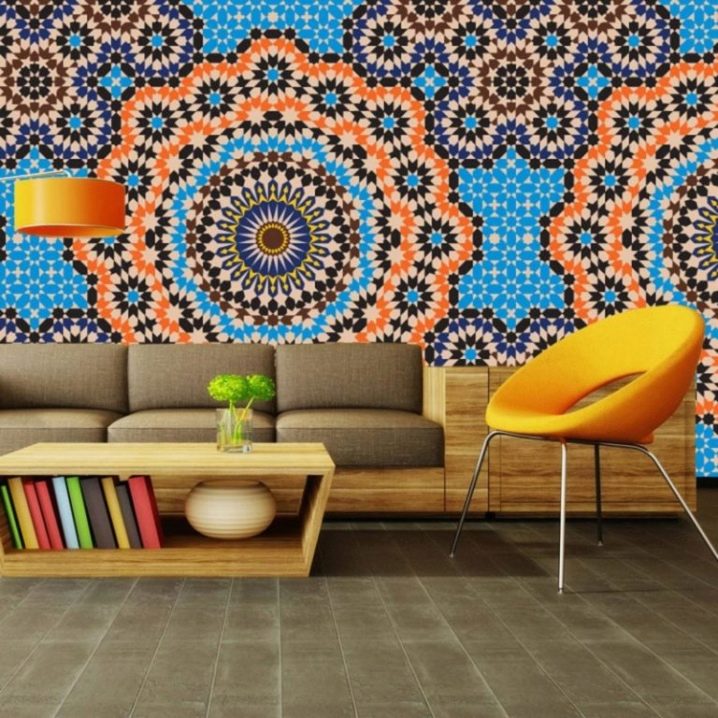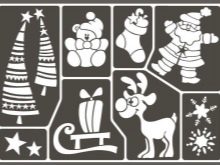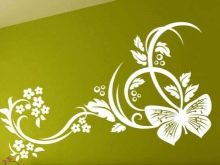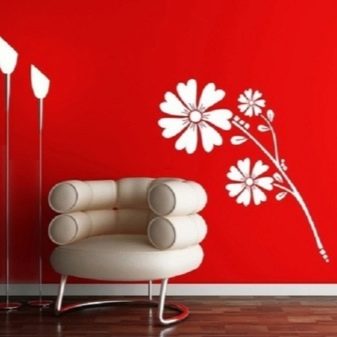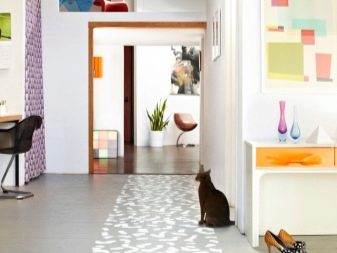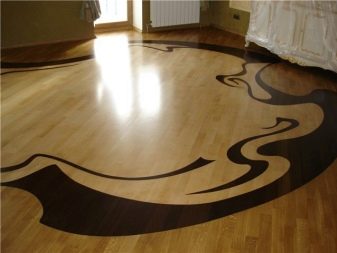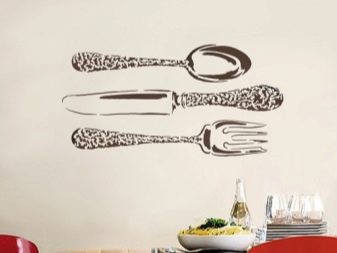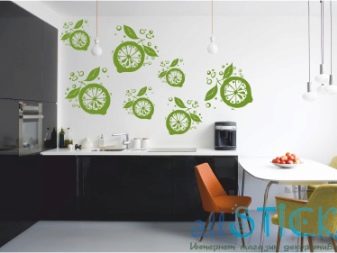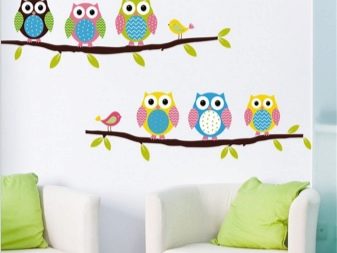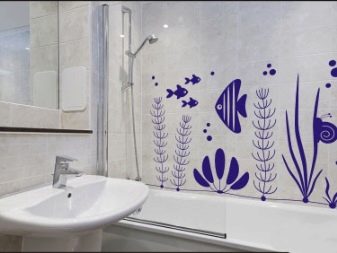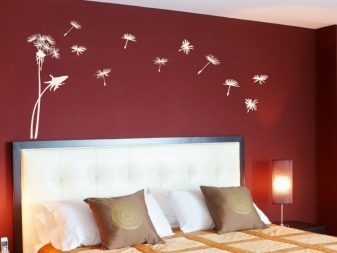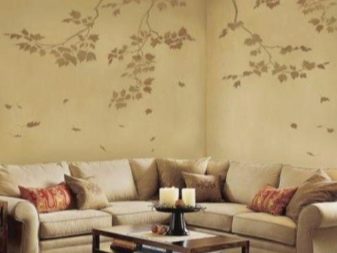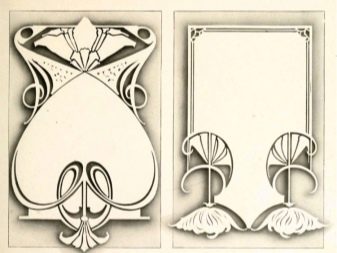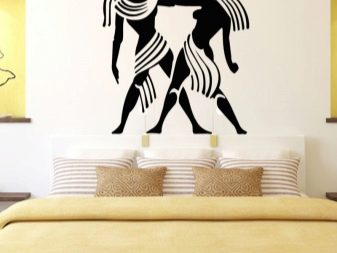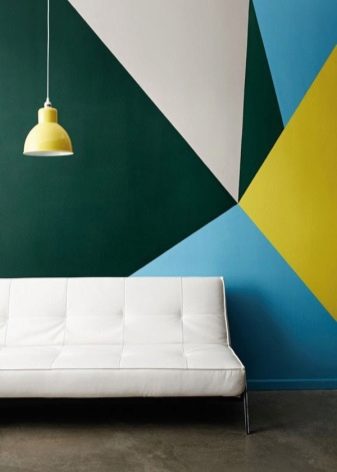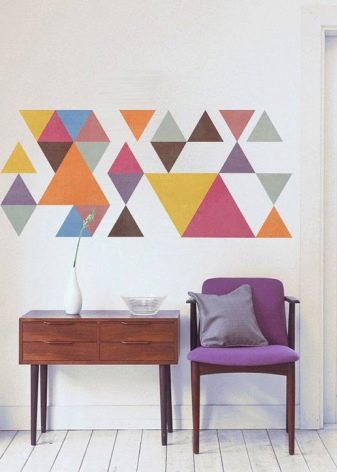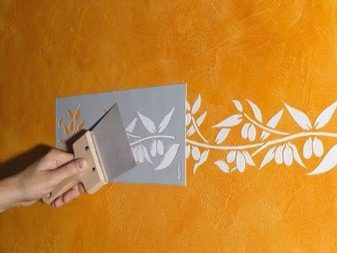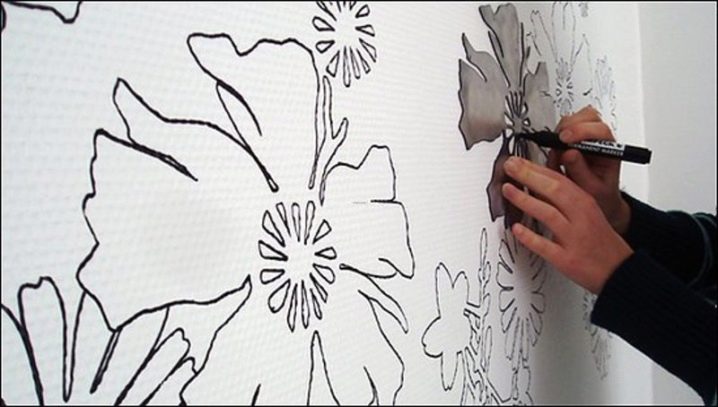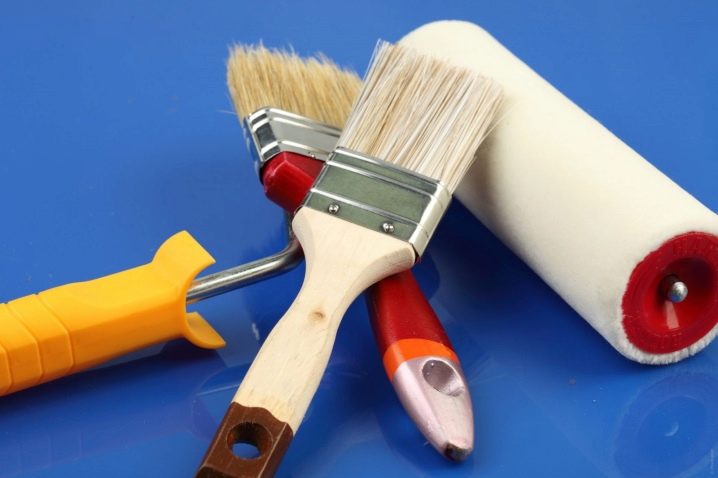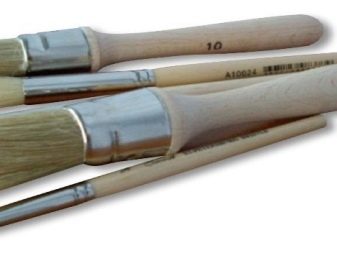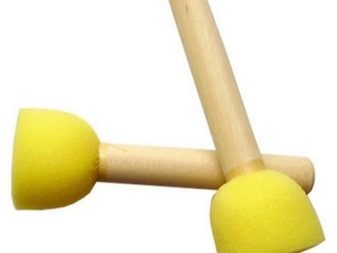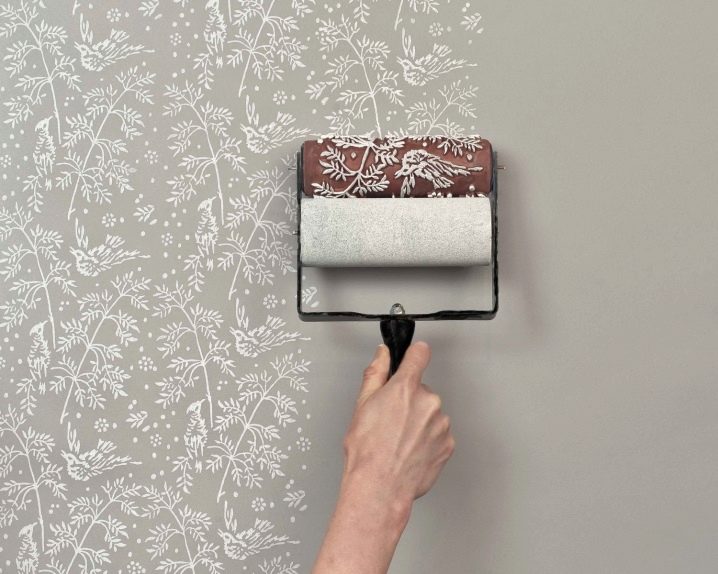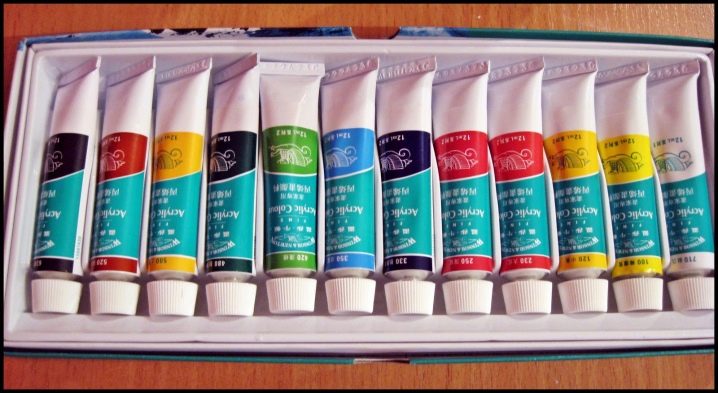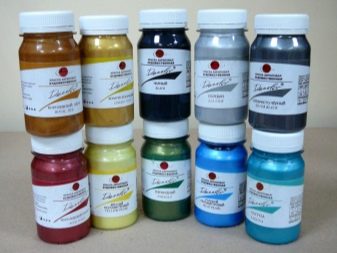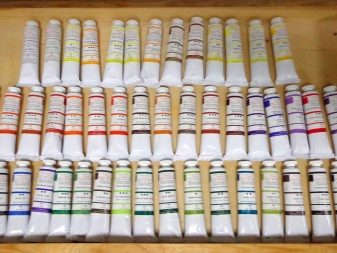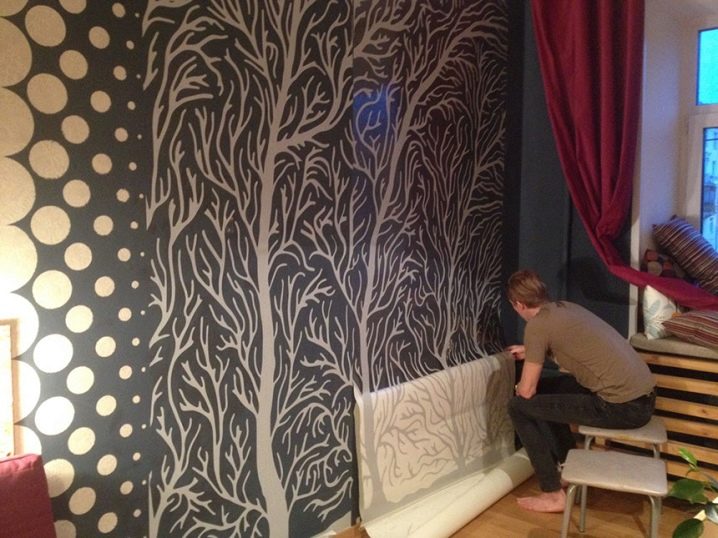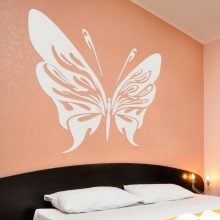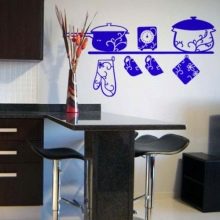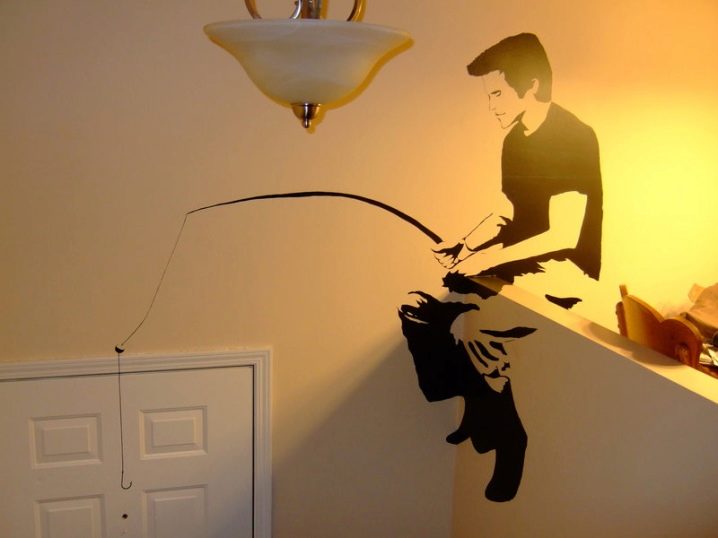Stencils for painting: varieties and uses
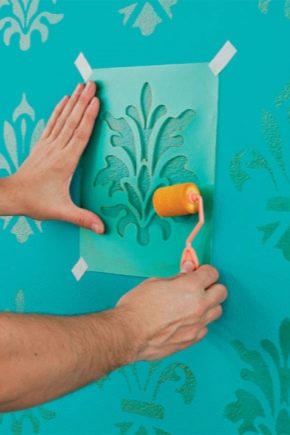
Since ancient times, the decoration of the house served as drawings, which are often located on the walls. Wall painting enlivens the interior, creates comfort in the house, emphasizes individuality regardless of whether the pattern is simple or complex. Today, a wide variety of stencils with their own characteristics are used to apply the pattern.
Special features
The stencil is in its essence a pattern on which a pattern is cut that is transferred to the prepared surface for painting.
By applying the template to the surface, you can decorate not only the wall, but also any other plane.
Beautiful pattern can be obtained on the mirror, put on furniture, decorate the floor surface, with it to decorate the surface of the door.
Through the use of a stencil, you can visually adjust the space of any room, masking the flaws or emphasizing the advantages. Working with templates, you can achieve amazing design changes without any special skills, because applying paint to the surface is not only easy, but also very exciting. Patterns for paint - a great opportunity to feel like a designer to any person.
Most often, stencils are used to decorate the walls for painting. The pattern itself is always different in color from the main surface. For a general picture, one or several stencils can be used.
Types of materials
To date, there are a variety of materials used for the manufacture of stencils.
Depending on the strength, they are subdivided into disposable and reusable types:
- Disposable templates are made from materials that have a structure that can withstand a single exposure to paint. After transferring the pattern to the surface they are thrown away.
- Reusable stencils are made from materials that can withstand repeated exposure to chemical components, and they are also resistant to scratches from the tools used.
PVC or polyvinyl chloride for templates are made of different density and color. Vinyl film templates are disposable stencils. They have a flat surface, where on the reverse side there is an adhesive base that allows you to firmly fix the template at the place of the drawing.
But you need to practice beforehand to acquire the skill, without it it will be difficult to translate the pattern without smearing it. Yes, and during the process will have to clean the surface of the stencil from the paint, so as not to stain the adjacent surface.
For drawing volume patterns use PVC, having a thickness of several millimeters. As a substance instead of paint, plaster is used to fill all the holes of the stencil, which is removed only after it is completely dry.
Disposable types of templates can be made of cardboard, parchment paper, foil, masking tape. All these materials do not have sufficient density and resistance to moisture and other components contained in the paint or plaster.
Reusable templates are made of plastic and acrylic. They are durable and stable, they are not afraid of any moisture or other components that make up the dyes.
Types of drawings
For the decoration of the surface can be used very different in style and direction of drawings, for the application of which are used a variety of methods.
The simplest version includes drawings using only one color. The template with the pattern cut out in it is applied to the surface and painted in the selected tone. Sometimes it is allowed to use a gradient when the figure goes a smooth transition from a lighter tone to a darker one. For simple options, the use of other colors is not allowed.
The complex variant includes patterns where several colors are used. Multicolor patterning is made using several templates with pre-printed labels. To make the picture look good, and its fragments coincided, you need to correctly combine all the marked places.
Therefore, this method is only suitable for those who have significant experience with stencils.
Sometimes drawing transferred to the surface does not need to be painted over. Such templates do not have the shape of the cut parts inside; they have only an outline. They are also called anti-patronage or reverse patterns. When a template is applied to a surface, the space around it is filled. After the stencil is removed, its contour having the base color remains on the surface.
Three-dimensional drawings made with a putty and coated with paint or varnish after complete drying allow to achieve a 3D effect. To perform such patterns requires great skill and careful execution.
Images may relate to different subjects. Pick them up, based on their own taste and purpose of the room.
There are several areas, which are divided into patterns and drawings:
- The geometric direction includes patterns with circles, squares, triangles, as well as images with brush strokes.
- The direction "Damascus" is famous for drawings, which depict various forged products or patterns, consisting of sharp tips.
- Animal and animal themes are the most extensive.Images can serve as trees, bushes, flowers, various types of animals. In addition, some fragments of the plant world can be used in the patterns: flower bud, tree leaf, branch.
- To the children's direction are templates with the image of cartoon characters, anime characters, as well as fabulous images of nature.
- For the curb areas characterized by the image of different elements of the interior, namely: corners, columns, as well as patterns that allow you to decorate the frame with inlays.
- There is also a mosaic direction, where the picture has the appearance of a mosaic.
- Templates with a holiday direction depict a variety of special events. It can be a wedding day, New Year, and March 8, and February 23, as well as other holiday events.
How to choose?
As a rule, the choice of a stencil depends on the type of room, which is planned to decorate, and on the location of the surface to be decorated. But there is a general set of rules that must be followed by choosing a pattern with a certain pattern.
When selecting a picture, it is necessary to take into account not only the general style of the room, but also the pieces of furniture that will be there, as well as accessories, which are an addition to the style.
In order not to overload the selected surface, it is better to opt for templates with a small number of lines. Conciseness is the key to good taste.
When choosing a stencil, you need to clearly know what surface it is intended for. For the walls for painting fit almost all types of patterns. For wallpaper suitable templates for reusable, the drawing of which can only be translated using paint. Volumetric types of patterns, consisting of putty, will not stick to such a surface, they are intended only for surfaces for painting.
For the floor as well as for the walls with wallpaper, it is better to stop on the stencils for painting. But in this case, you can use not only reusable options, but templates designed for single use.
The type of room is important when choosing a pattern for the stencil. For the kitchen most often choose images with objects related to the plant world.
Fruits, vegetables, flowers, as well as all kinds of landscapes fit well into the interior of this room.
For the children's room a great solution would be a drawing with a children's theme or an image of animals.They are perfect for decorating walls, ceilings and floors. A bathroom is better to arrange a marine theme.
For living rooms and bedrooms, the picture is selected according to the interior of the room, using the zoning method or decorating the entire surface.
Making the living room - a responsible matter, so the picture should be perfectly matched.
An entrance hall, as a rule, has one or several mirrors; therefore, it is possible to apply a pattern using a stencil not only on the walls, but also on the mirror surface, and also to use the surface of furniture. The main thing is to correctly beat the conceived composition, and not to mix patterns of different stylistics in one space.
Pompous and luxurious art deco style requires a special approach, and therefore templates with geometric ornaments and small-sized figures are best suited for it. Stencils with monumental images can also be used, but they are not used as often.
Images of ancient Greece are best suited for the antique style, giving sophistication and mystery to this room. Columns, statues and vases are usually depicted on the walls near the entrance doors.To highlight a specific area in the room using images of ancient gods or heroes of mythology.
Modern style dictates its own rules. In this case, stencils depicting geometric shapes will be appropriate.
When choosing a stencil for walls, ceiling or floor, you need to decide which is better: buy ready-made or do it yourself.
The template, manufactured in an industrial way, has clear lines, as it is made on professional equipment. In order to make a stencil yourself, you have to make a lot of effort, and there is also a chance that the contours of such a template will have uneven edges. However, self-made template will cost less than the finished version. The final choice always remains with the owner of the room.
If the choice fell on a template made by an industrial method, then it is necessary to pay attention to some nuances:
- First of all - this is the price of the stencil. It depends on many factors. The more complex the pattern, the higher the cost of the template. Large and complex drawings of famous brands cost more than 500 rubles.
- When buying, you should carefully look at the stencils, so as not to confuse them with stickers intended for walls.These elements, with which they decorate the walls, have many similarities.
- The selected template must be carefully examined: as a rule, in a high-quality specimen designed for repeated use, small jumpers are firmly connected to the base, and the stencil has no breaks.
Required tools
Previously, a variety of devices were used to translate a pattern through a template. The paint was applied using linen sacks, slices of potatoes, sea sponges, and also used small sticks, at the ends of which were wound with cotton or wool. But today the tools used for applying paint have a different look, and it is much more convenient to use them. All sorts of brushes, sponges, rollers and even sprayers are presented in a large assortment.
For applying paint is most often used brush. Stencil brush has a rounded shape and dense structure. Bristle hair cut to one length. Such design features allow you to apply paint without smudges. Brushes with stiff bristles are necessary for applying the base, and those with soft bristles are used for tinting.
The size of the brushes is also important: large specimens are used to paint the background and significant details, while small ones are used to paint the thin elements of the pattern.
The sponges consisting of foam rubber allow to put paint thinly and in an even layer. Most often they are used to create a base layer or when working with large parts.
For beginners, a stencil roller with a special rubber base with convex details of the pattern will be an excellent tool. It is easy to work with it, the paint is applied with a thin layer, without smudges. Figures will have a uniform appearance, without semitones and transitions, but they look very neat.
Spray guns or spray cans are often used to apply a pattern using a stencil. Using them is easy, but it is worth monitoring the uniform distribution of the layer. In addition, often the cylinder head sometimes has to be cleaned, as it can get clogged with paint.
Using
In order to transfer the drawing to the surface, in addition to the tools and the template, you need to purchase paint. Almost all types of paints are suitable for this process. Acrylic, oil, water-based and other types have both advantages and some disadvantages.And in order to figure out which paint is best to buy, you need to consider each look in detail.
The undoubted leader among all analogues is acrylic paint, which has a lot of advantages. It is very convenient to work with acrylic paint; in case of an erroneous application of a layer, it can be removed using a regular sponge dipped in water. Therefore, it is best for beginners to use this type of paint. In addition, it is not toxic, in the process you can not use protective equipment for the respiratory tract.
It is also worth noting that if different colors or shades are required for painting the surface, there is no need to acquire many colors, it is enough to buy a color scheme or mix colors to obtain the desired shade.
Figures transferred to the surface with the use of this paint remain in good condition for quite a long time. Paint perfectly tolerates temperature changes, resistant to UV rays. The pattern is characterized by a smooth surface and the brightness of the selected colors for a long time. In addition, acrylic paint can be used on any surface.
Oil paint is also often used to apply a pattern using a stencil.But it is worth remembering that when working with it, it is necessary to prepare the surface well and use protective equipment, as it is toxic. Working with it is somewhat more difficult than with acrylic paint, but it lays down just as well. With its help, you can create smooth transitions on the pattern, and the pattern itself remains bright and saturated for quite a long time.
After choosing the stencil and paint, you can start working, observing a certain sequence of actions.
After careful preparation of the surface, you need to attach the template, checking the tight fit and flatness. Fixing the stencil in the desired position, apply the paint with a brush, roller or applicator. You need to act as carefully as possible so that the layer is even. Then you should wait for some time, the applied layer should dry out, only after that you can remove the stencil.
The reusable pattern is washed, and the stencil for single use is discarded. If in the process of work formed uneven edges, then you can correct them with a brush.
Options in the interior
Use patterns in the room can be different.In some cases, they perfectly replace the wallpaper, the picture goes over the entire surface of the walls and consists of repeating elements, or on the surface they depict separate drawings, interconnected in meaning.
Sometimes drawing does not occupy the entire surface, but is located only in a certain place. A good location can be called a pattern near a switch or a power outlet, because these areas are more contaminated than others, and therefore the applied pattern well hides traces. It also looks great pattern near the head of the bed in the bedroom, near the table in the kitchen or on the wall near the sofa in the living room, thus highlighting the seating area.
A composition that originates on a wall or ceiling and gradually transitions to other surfaces looks original. The main thing is to choose the desired template, as well as correctly calculate the location of the picture.
In the next video, you can watch a master class on making a reusable stencil with your own hands for stencil painting.


